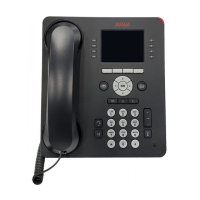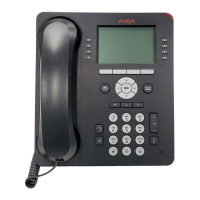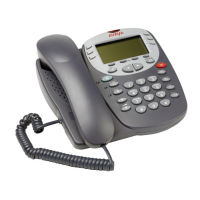Configuring the Avaya 1120E IP Deskphone
92
Table 11: Supported USB audio formats
After you select the format and the Set Interface command is sent, the
USB headset runs in Generic Mode 1 operation (both audio and HID) or
Mode 2 operation (audio only). If the headset runs in Mode 1 operation,
the IP Deskphone configures the task or callback to communicate with
the USB HID control events between the IP Deskphone and the headset.
You can insert the headset during an active call. The IP Deskphone
synchronizes the headset state machine of the IP Deskphone to the
current state of the headset to ensure the LED match status.
During the call, if the audio negotiated between the two parties is set to
8KHz audio and the IP Deskphone is setup for 16KHz USB Headset
audio, the IP Deskphone performs the transcoding between 8KHz audio
to 16KHz audio. Likewise, if the audio negotiated between the two parties
is set to 16KHz audio and the headset supports only 8KHz audio, the
IP Deskphone performs the transcoding between 16KHz audio to 8KHz
audio.
Generic USB headset
When a generic USB headset (or supported headset with HID command
disabled) is attached to the IP Deskphone and selected, it behaves like a
wired headset. All call controls, on hook, off hook, mute, volume up, and
volume down are performed using the keys on the IP Deskphone. The
IP Deskphone does not use the User interface elements on the headset,
Audio Parameters Values
Audio Format PCM only
Subframe size 2
Bit Resolution 16 bits
Frequency Type Continuous (0) or Discrete (> 0)
Sample Frequency If Continuous, default to 16 KHz. If
Discrete, 8 KHz, 16KHz or 8KHz
multiple. Preference is given to
16KHz audio, if supported
Audio Channel Mono (1) or Stereo (2)

